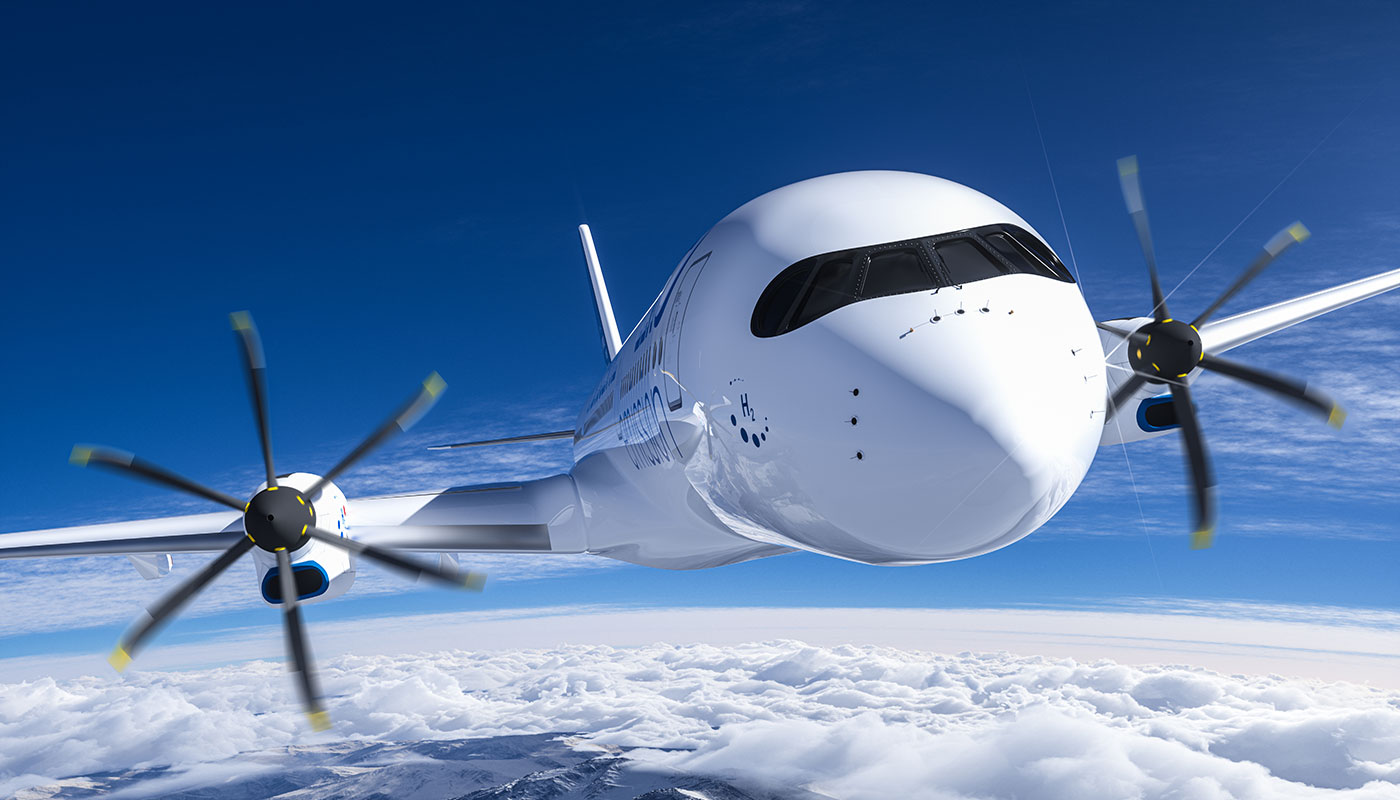
IP takes flight: inventing the future of aviation
Just as the technological marvels behind aviation are often taken for granted, so too can its impact on the environment fly over our heads. Thankfully, the technological triumphs achieved since the dawn of powered flight are on course to be matched by a host of sustainable developments in the coming years.
The European Union has set itself the lofty goal of becoming completely carbon neutral by 2050. Admirable though such targets may be, concrete and near-future solutions are required to offset the gigaton of carbon dioxide released globally by airlines in 2019 alone. At this leading edge of research and development, Intellectual Property (IP) rights are the lynchpin of innovation, protecting those inventions that will transform our skies.
Fully charged innovation
The earliest electrically powered aircraft dates back to October 8, 1883, when French brothers Albert and Gaston Tissandier flew a 28-meter-long airship at the humble speed of three miles per hour. All the same, potassium bichromate cells propelled the 1.5 horsepower Siemens electric motor and the brothers into the history books in a feat seldom emulated. Over the decades that followed, occasional forays into electric aircraft brought only limited success, including an early helicopter concept from Austro-Hungary in 1917 and an Austrian glider 56 years later.
It was not until NASA inherited a previously classified government project in the early 1990s that the idea of a fully electric aircraft really took off. The solar-powered Pathfinder program set new milestones for range and endurance but could carry no pilot. Serving more as a research platform and technology demonstrator, Pathfinder was never intended to spearhead a new generation of aircraft because, as all these examples show, aeronautical design is an unforgiving compromise between power and weight.
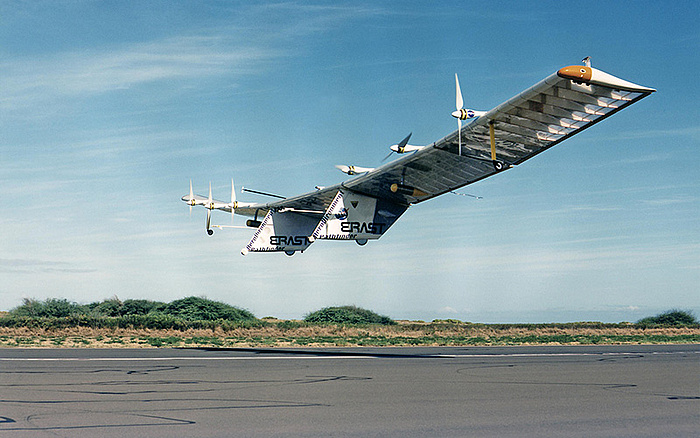
Manufactured by the AeroVironment company, the Pathfinder unmanned aerial vehicle (UAV) and its successors demonstrated the feasibility of ultra-light, ultra-efficient aircraft powered by electricity. (Image credits: NASA Photo)
Though today's electric cells have just enough energy density to keep a small plane aloft without taking up too much space or adding excessive weight, the prospects of scaling upwards are still very limited. Nevertheless, engines such as the Magni650 and the prototypical Rolls-Royce RRP200D are able to get the idea off the ground. Among the many electrifying patent grants and applications from Rolls-Royce is an enclosed double-rotor engine for enhancing thrust without negatively affecting the aerodynamic profile.
But to prove that smaller, propeller-driven planes are ideal for battery power, one need look no further than Alice from Eviation. Driven by two Magni650 engines, each running at 644 kilowatts, Alice completed its maiden flight at Moses Lake Airport in Washington state on September 27, 2022. And if a cruise speed of 407km/h (252mph) is not enough, among the patent applications from Eviation is a hydrogen afterburner – for the environmentally conscious top gun.
Air taxis – stuck in legal traffic
However, it is not all blues skies when it comes to aerial IP. For almost as long as futurologists have called themselves futurologists, the so-called "flying car" has been emblematic: first, of technologies predicted to be just around the corner and later of grounded ambitions and deflated hopes. One promised solution to this perennial disappointment is the electric vertical takeoff and landing (eVTOL) taxi, and in this sector, there is no shortage of players.
Originating in 2010, Wisk Aero of Mountain View, California, is one such company. With a strong foundation of IP, a joint venture with Boeing and Kitty Hawk Corporation seemed all that was needed to catapult their four-seat eVTOL to success. But the market airspace is not as calm as it might seem.
Enter Archer Aviation. Formed in 2018 with a number of former Wisk Aero engineers, the company claims its flagship craft, Midnight, will carry four passengers and a pilot up to 100 miles. Of course, the sky is big enough to hold both companies and their IP, but the fact that Archer had hired away 17 of Wisk's engineers led to some serious accusations. On April 6, 2021, following a raid on a former employee's home by the FBI, Wisk filed suit against its rival, alleging trade secret misappropriation and patent infringement.
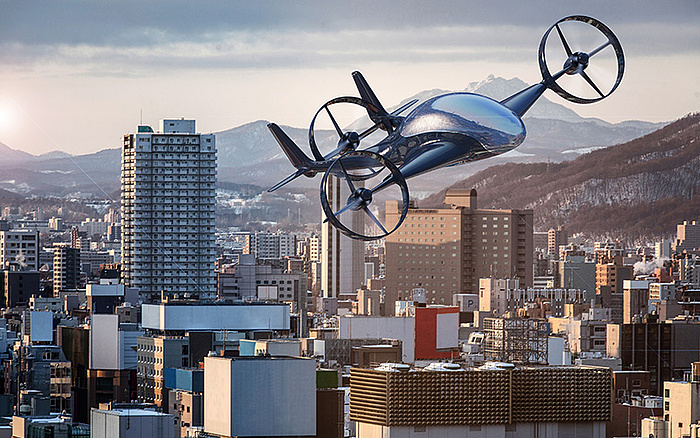
The flying taxi has long been the dream of urbanites the world over but remains almost as elusive today as it did throughout the 20th century. However, each breakthrough technology brings with it a resurgence of investor enthusiasm for the concept.
In response, Archer countersued for $1 billion USD of lost revenue due to a "false and malicious extrajudicial smear campaign." Both companies have scored points in a bitter and ongoing legal tussle, but loss for either party could spell bankruptcy and clip the wings of the flying taxi once again.
Joint efforts and hybrid systems
Industrial espionage and litigation to one side, innovative companies understand that going it alone can be turbulent. Thus the EU has established the Clean Aviation Joint Undertaking to connect intergovernmental efforts with private industry. The EU Commission has pledged €1.7 billion, and members of Europe's civil aerospace sector will contribute at least a further €2.4 billion to develop disruptive aircraft technologies and steer toward a climate-neutral aviation system by 2050.
In the Joint Undertaking's first call for proposals, a total of €700 million was assigned to 20 research projects, with significant attention given to hybrid propulsion. As mentioned, pure battery power is not feasible on aircraft intended to carry more than a dozen people, so this is where hybridization comes into its own.
As on the Tissandier brothers' airship, electric fuel cells generate electricity onboard an aircraft instead of simply storing it. Except where the French pioneers used potash, modern cells employ chemical reactions of hydrogen and oxygen, with water as the only significant emission. And the technology is maturing rapidly: Airbus recently unveiled a hydrogen fuel cell engine they claim will be able to power a 100-passenger plane with a range of 1,000 nautical miles as early as 2035.
On top of the output scaling that comes with stacking multiple fuel cells, another advantage is that they can be integrated into existing engine architectures to boost fuel efficiency. Today, only turboprop and turbofan engines produce the thrust needed to maintain our commercial skyways. In both systems, spinning fins (either external propellers or internal blades) compress and heat air as it enters the engine. Once there, fuel is added, and the high-temperature mixture is ignited. In this setup, a fuel cell would be able to "pick up the slack" when the combustion process is not running at peak performance – as during takeoff and landing. In parallel, standard kerosine jet fuels can be substituted with so-called "drop-in" fuels. These can be produced from various renewable sources, including algae, waste vegetable oils and even animal fats.
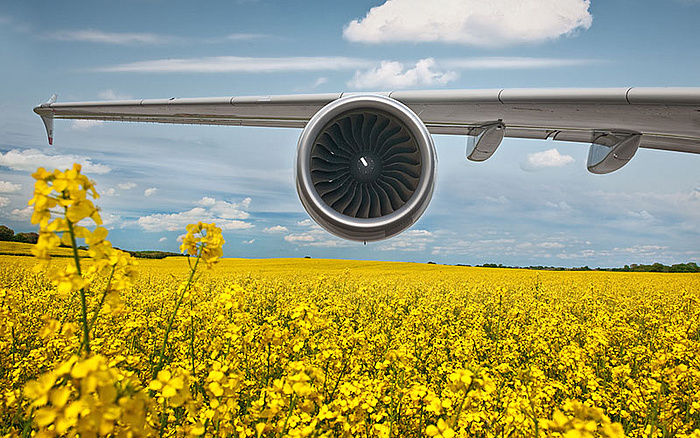
A variety of common crops, such as rapeseed, can be used to produce biofuel alternatives to kerosine. But before any new fuel can be used, it must be exhaustively tested under operating conditions on all materials it could come into contact with: metals, composites, sealants, gaskets, etc.
Combined, these technologies have tremendous potential to curtail carbon dioxide emissions from civil aviation in the short term. This is why Boeing, one of the world's largest aerospace manufacturers, has challenged itself to ensure that all of the civilian aircraft it produces will be able to run on 100% sustainable aviation fuel (SAF) by 2030.
Of course, burning SAF still releases carbon dioxide, but remediation projects are in the works that could result in a net-negative footprint. One of the most extensive is a network of direct air capture (DAC) plants supported by Airbus. Patented by Carbon Engineering and brought to field by Occidental subsidiary 1PointFive, at least 70 such facilities are planned to capture, utilize and sequestrate atmospheric carbon by 2035. The carbon removed from the air can even be repurposed to produce further SAF.
In it for the long haul
Moving into the future, a fully hydrogen-burning architecture will likely define intercontinental travel as it is the most compatible with high-altitude, long-range turbofan systems. However, there are significant hurdles still to overcome, namely hydrogen generation and storage.
It is imperative for the success of carbon-neutral aspirations to establish ancillary infrastructure. Hydrogen fuel production must be completely renewable to prevent carbon emissions "upstream" of the airline industry. Second, and even more troublesome, is the problem of containing that hydrogen fuel onboard an aircraft. We generally think of hydrogen as a gas, but it would be impossible to carry tanks of compressed gas large enough to feed giant planes, so it must be stored as a liquid. Easier said than done, considering liquid hydrogen must be kept at -253°C.
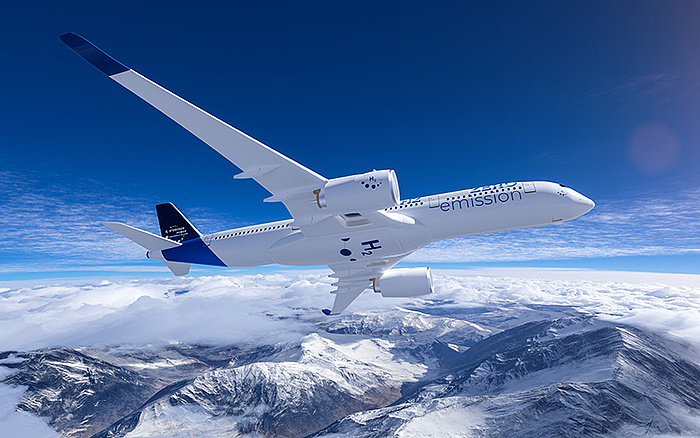
In airliners, most of the fuel tanks are located in the wings. This saves space inside the main body for passengers and cargo and reduces stress during takeoff – when the plane is at its heaviest.
To this end, Clean Aviation is funding a project from the Spanish company Aciturri. Named H2elios, this €25 million endeavor aims to create a cryogenic fuel tank that will use the skin of an aircraft's fuselage as its exterior wall. In a similar vein, Boeing received a patent in 2016 for a cryogenic tank integrated into the wing of an airplane.
The route to net zero involves many more technologies than those related to propulsion, with a holistic strategy needed to maximize industry efficiencies. As such, novel airframe and wing designs, improved avionics and safety and even noise reduction all have their part in achieving environmental targets. So as far as up-and-coming IP is concerned, the sky is the limit.
The high flyers at Dennemeyer have the legal knowledge and advanced tools to ensure that your patents are protected worldwide. Get in touch with us and let your business soar!
Filed in
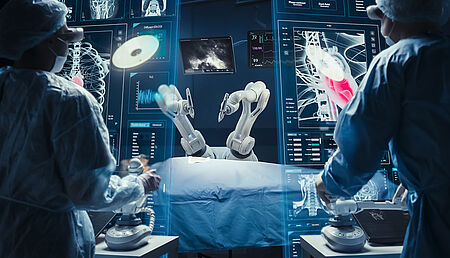
Take an in-depth look at medical devices and how IP will foster, inform and protect more innovative healthcare experiences.



